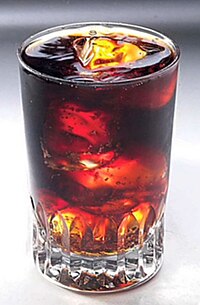**1. Production of Caramel Color:**
– Caramel color is produced by heating carbohydrates with acids, alkalis, or salts.
– Various sweeteners like fructose, sucrose, and molasses are used in its production.
– Different acids, alkalis, and salts are utilized in the manufacturing process.
– Antifoaming agents can be incorporated during production.
– Caramel color molecules can carry positive or negative charges based on the reactants used.
**2. Classification and Properties:**
– The UN recognizes four classes of caramel color based on the reactants used.
– Each class has unique properties suitable for specific foods and beverages.
– Color intensity is measured at specific wavelengths for classification purposes.
– The Linner Hue Index determines the color hue of caramel color.
– Various global indices exist with conversion factors between them.
**3. Functionality and Applications:**
– Caramel color acts as a colloid primarily for coloration.
– It can serve as an emulsifier in soft drinks and inhibit certain types of floc formation.
– The light protection quality helps prevent oxidation of flavor components.
– It is used in various foods and beverages for additional functions like color enhancement and emulsification.
**4. Safety and Toxicology:**
– JECFA sets Acceptable Daily Intake levels for different classes of caramel color.
– FDA classifies caramel color as an approved color additive exempt from certification.
– Caramel color has excellent microbiological stability.
– Traces of sulfites may be retained after processing, with labeling requirements above 10 ppm in finished products.
– Studies show that commercially produced caramel color is not carcinogenic or mutagenic.
**5. Regulations and Industry Position:**
– Various regulatory bodies like JECFA, FDA, and FCC provide guidelines and standards for caramel color use.
– Industry position statements, such as those from ITCA, address specific issues like gluten-free caramel color.
– Ongoing research and studies, including those by Kamuf et al. and Vollmuth, contribute to understanding caramel color safety and applications.
– Proposals like California’s Proposition 65 list 4-Methylimidazole in caramel color, raising awareness about potential allergens like wheat, barley, or milk derivatives.
– Resources from organizations like ITCA and Codex Alimentarius aid in further understanding the production, classification, and application of caramel color.
Caramel color or caramel coloring is a water-soluble food coloring. It is made by heat treatment of carbohydrates (sugars), in general in the presence of acids, alkalis, or salts, in a process called caramelization. It is more fully oxidized than caramel candy, and has an odor of burnt sugar and a somewhat bitter taste. Its color ranges from pale yellow to amber to dark brown.

Caramel color is one of the oldest and most used food colorings for enhancing naturally occurring colors, correcting natural variations in color, and replacing color that is lost to light degradation during food processing and storage. The use of caramel color as a food additive in the brewing industry in the 19th century is the first recorded instance of it being manufactured and used on a wide scale. Today, caramel color is found in many commercially made foods and beverages, including batters, beer, brown bread, buns, chocolate, cookies, cough drops, spirits and liquor such as brandy, rum, and whisky, chocolate-flavored confectionery and coatings, custards, decorations, fillings and toppings, potato chips, dessert mixes, doughnuts, fish and shellfish spreads, frozen desserts, fruit preserves, glucose tablets, gravy, ice cream, pickles, sauces and dressings, soft drinks (especially colas), sweets, vinegar, and more. Caramel color is widely approved for use in food globally but application and use level restrictions vary by country.

